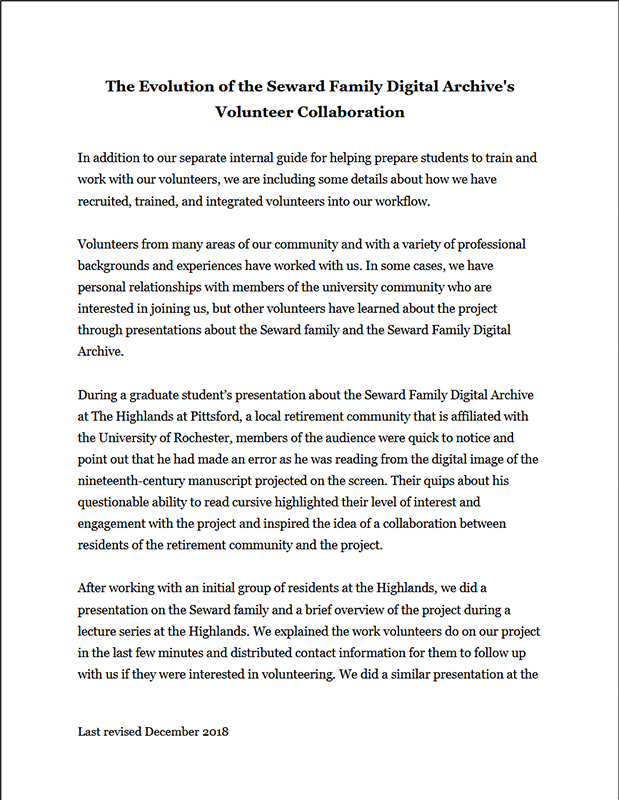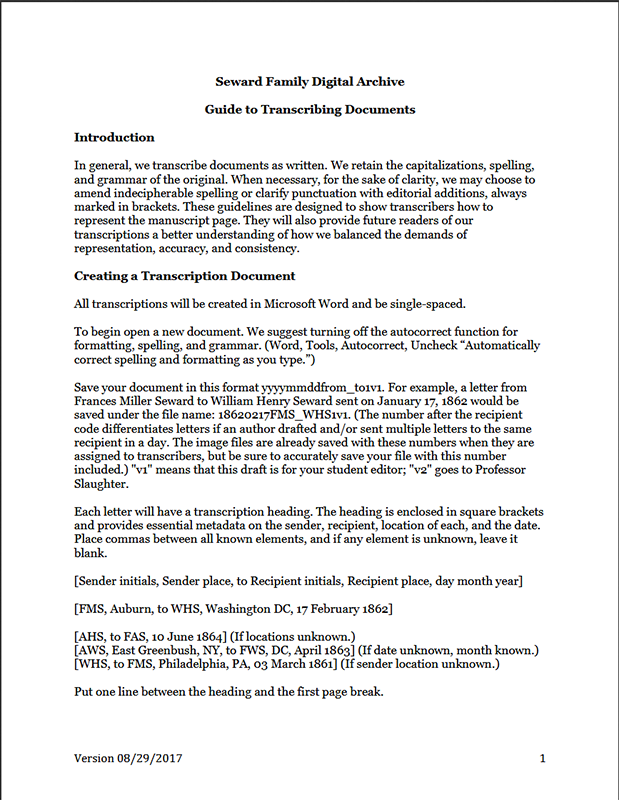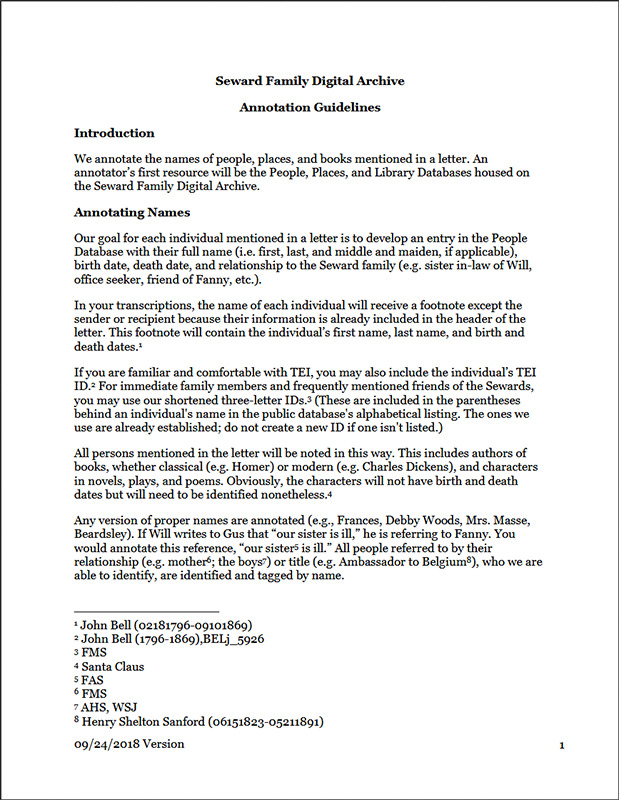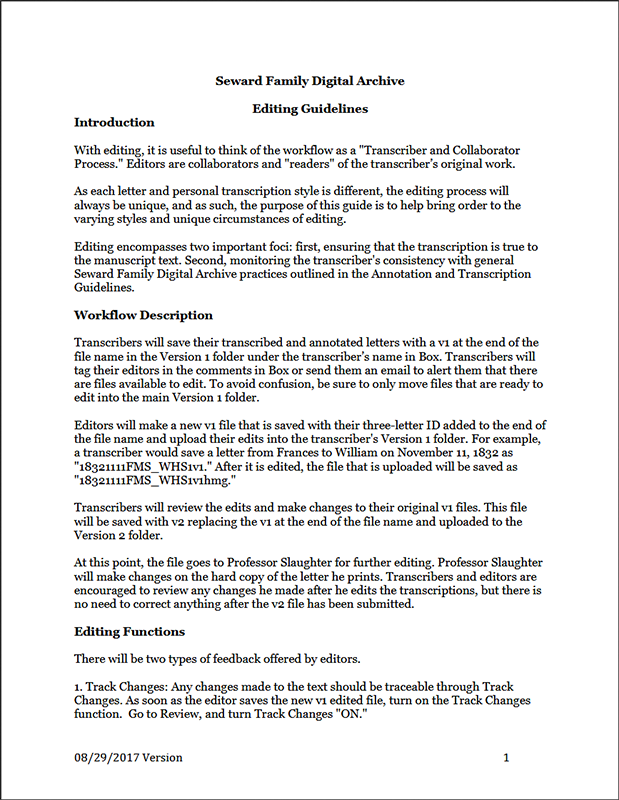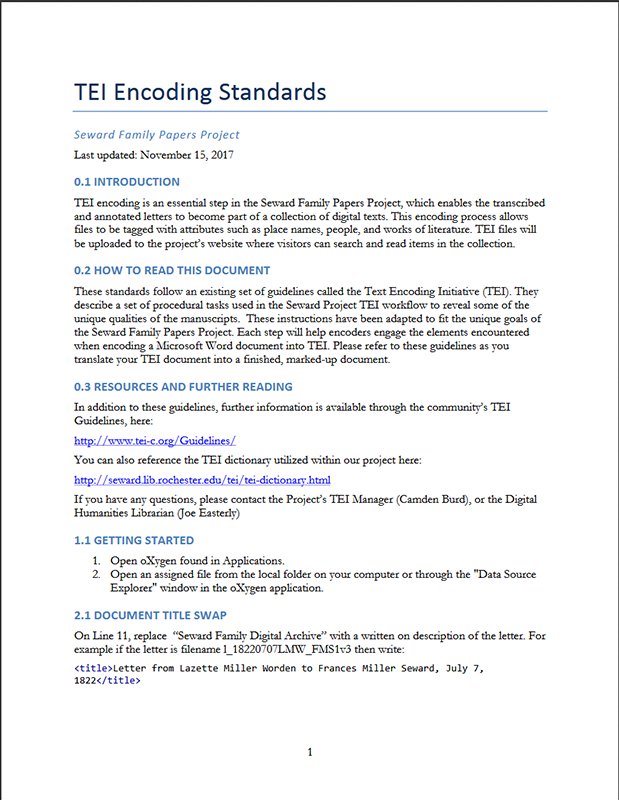Project Standards & Guidelines
Digital Preservation Guidelines
One of the first steps in our workflow begins with digitization. Student managers and their undergraduate assistants begin digitizing a cache of letters one semester ahead of when we plan to transcribe them. Student transcribers will use the digitized copies of letters to transcribe them, as well as refer to the original when discrepancies or questions arise. The digitization team ensures the images comply with standards by cropping and rotating them and tagging them with appropriate metadata. We tag six metadata fields: - creator – the composer of the letter - description – includes date and location from which the letter was sent - description writer – initials of the team member entering the metadata - category – type of document or manuscript, i.e., letter or bound volume - sublocation – recipient of the letter - copyright – date the letter was written Following digitization the letters are stored as “.dng” copies and then converted to “.jpg” for display on the website.
Transcription Guidelines
A crucial component of the Seward Family Digital Archive is to transcribe the manuscript material accurately and thoughtfully. We encourage our transcribers to think about both the context as well as the words on the page. Examples of thoughtful transcription include checking the date of the letter with the year, day of the week mentioned (i.e., Friday), and postmark; looking for contextual clues to figure out abbreviations; and using 19th century dictionaries to determine archaic words that have fallen out of usage or changed their meanings. Collaboration and teamwork is also essential to the transcription process. Team members frequently ask each other for help deciphering a word or phrase. Thoughtful transcription is key to clarity and accuracy and is the basis of all we do.
Annotation Guidelines
Annotation within transcriptions is used most commonly to mark references to people, places, or literature. These annotations show up on our website as bolded text within a transcription. For each person, place, or book annotated this way, if an entry for that entity does not already exist in our Drupal database, one is made. There are other special cases, such as changes in handwriting, postmarks, tears, or misspellings, which are also annotated in the transcription document. The following guide describes our process for annotating people, places, and books, and how to add them to our database, as well as how to annotate other special cases.
Editing Guidelines
Transcriptions change hands several times before a final product is displayed on our website. A text document, once fully transcribed and annotated, is edited by another transcriber, or "editor." The editor checks for errors in the transcription and its annotations. The edited document returns to the original transcriber, who makes any changes. The final document is reviewed by Professor Slaughter. Our Editing Guidelines describe in detail the transcriber-editor workflow.
TEI Guidelines
Our goal during the TEI process is to best represent the material found in the original manuscript. Consequently, our “digital markup” is minimal. Rather than focus on deep text analysis (an examination of word usage and patterns) we work to connect the individual people, places, and literature mentioned in the manuscript materials with other known appearances across the Seward Family Digital Archive. As a result we have created and mapped a vibrant web of social networks and literary references, all of which helps us to reconstruct the Seward Family’s world as they experienced it in the nineteenth century.
Volunteer Training Guidelines
We are grateful to have senior and retired volunteers who complete transcriptions for the project. These volunteers come to us with a range of skills. Some individuals have more familiarity with technology, while others have more familiarity with libraries, archives, and the nineteenth-century. This guide outlines our training process with volunteers who have the least familiarity with technology.


